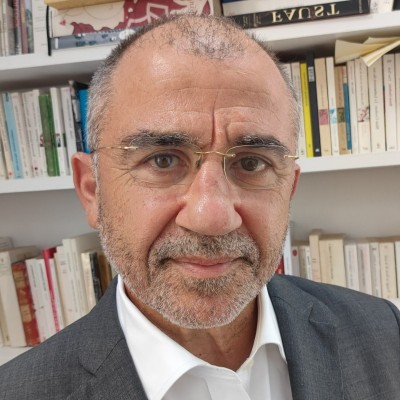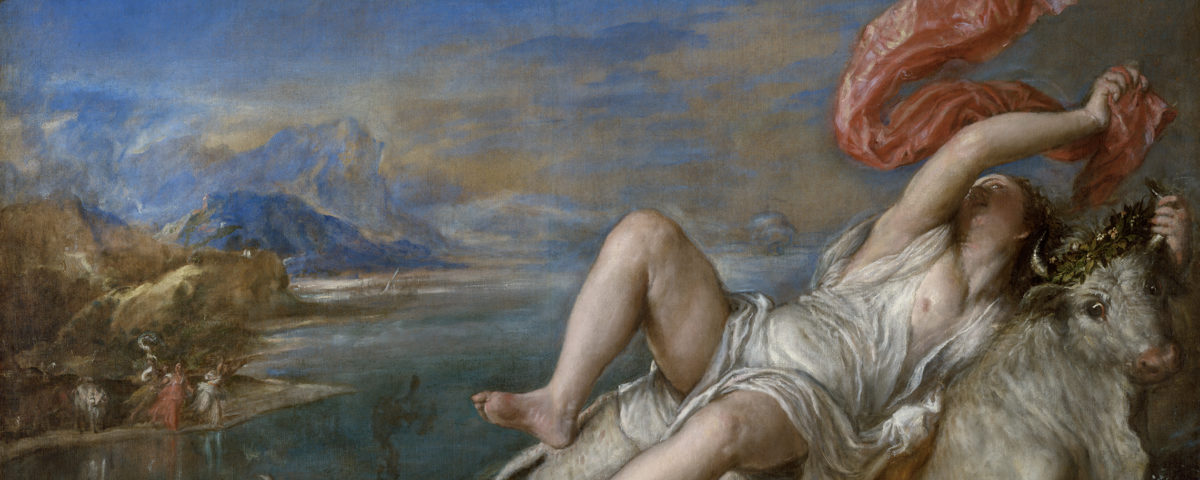Printed on the Greek 2 euro coins, and on the 5 and 20 euro banknotes, the face of Princess Europe fills the pockets of all Europeans. Those who are still unaware of the mythological episode of the foundation of a Europe detached from Asia, have only paid attention to the value of the paper they gave in exchange for their purchases. This event, whose purpose was to mark the discontinuity between a Greece anchored in the West, below the Hellespont, and a Persian empire that dominated the Levant, established, on the contrary, its continuity.
The oldest depiction of the abduction in Europe is on a metope on the Acropolis of Selinunte (Temple Y). “The daughter of the king of Tyre or Sidon was kidnapped by Zeus, who was transformed into a bull, and taken to the West, more precisely to Crete, where the God united with her and gave birth to male offspring of royal blood (cf. Hesiod, Fragments)”. If the West of that time is the Greek world, the myth evokes the power of the East that came to seed the coasts of the Peloponnese. The brother of Europe, Cadmos, traveled through Greece in search of his sister and, along the way, founded Thebes and engendered the first dynasty of kings.
The idea of continuity is confirmed by history. In the 9th century B.C., the prosperity of the Phoenician cities trading in the Mediterranean sharpened the appetite of the continental powers, the Assyrians, then later the Babylonians and finally the Persians. Tyre was then at its peak. Usually these cities contained external appetites with money. Once the pressure became too great, it triggered an unprecedented wave of migration to the trading posts of the west, and it was when Carthage was founded. One can legitimately hypothesize that the myth of Europe was derived from a Phoenician myth, bearing the memory of this uprooting.
Later, at the beginning of our era, the road that Paul followed and that led Christianity to universalism passed through Sidon, Tyre, Antioch, Damascus and Byzantium. The center of Europe stubbornly Mediterranean radiated from its mythical cradle and spread the seeds of modernity to the West. The advent of Constantine, in 324, and the shock of Alaric’s sack of Rome, in 410 AD, marked a turning point that broke the Mediterranean into two parts, a weakened West and a powerful East.
While religious quarrels over the human and divine nature of Christ were developing, culminating in the Great Schism in 1054, Arab expansion, long infused in the cauldron of aversion to an overly dominating Byzantium, conquered a Mediterranean ready to break free. The heart of Europe was definitively separated from its cradle.
This untenable situation found a way out as early as 1091 with the First Crusade, during which the Eastern Latin States were created, which lasted until the 13th century, then came under Ottoman domination. The mountain of Greater Lebanon overlooking Tyre and Sidon was the refuge of the dissidents, the Maronite Christians who refused the double nature of Christ, the heterodox Ismaili Druze and various minority religious communities. The Lebanese identity was forged in this dissidence that cemented, for hundreds of years, in the same history, a diversity of peoples.
We can only note, as Arnold Toynbee and I have noted, that this common history, paved with conflicts as well as periods of deep understanding, has allowed the survival of religious groups that would otherwise have disappeared, overwhelmed by the dominant orthodoxies. This long survival sealed their alliance for all time.
The failure of Emir Bashir Shehab II in 1840 and the takeover of the Ottoman Empire which attached Lebanon to Syria was a mistake. The French intervention in 1860 put an end to this dependence and restored Lebanon’s autonomy. After the 14-18 war and following the secret Sykes-Picot agreements between France and Great Britain, Lebanon was placed in the French zone of influence. This led to the creation of the state of Greater Lebanon and its independence after 1943. Although guided by political considerations, France had also grasped the character of the Lebanese people who, on that occasion, had strengthened more than an attachment, an admiration for a nation was born, like him, in a dissent against monarchical absolutism.
Because of its genotype, the Lebanese people cannot durably accept to be subjected to any regional power, be it Iranian or Saudi, unless they resign themselves to disappear. The current situation of Hezbollah’s military hegemony threatens to destroy the essence of the Lebanese identity.
Lebanon was built between Europe and the East, it is truly a mediator, a human, cultural and religious bridge between Europeans, French, and diverse Arab peoples who are not reduced to the large Shiite and Sunni blocks that fight to dominate the region, supported by the great economic powers of the planet.
Lebanon must be helped, preserved, because it is a part of Europe in the East, it is part of these in-betweens, these bridges, hoped for, primordial, indispensable, identified by François Jullien, so that the true universality of ideas, peoples and men can be realized. He possesses the human solutions to live the diversity of cultures and beliefs, at the same time as he aspires to found political solutions.
A situation of crisis is an opportunity for change, and both Europe and France must seize it.

